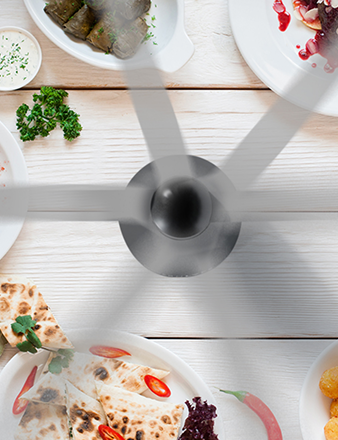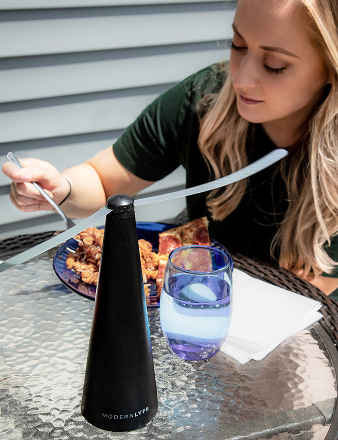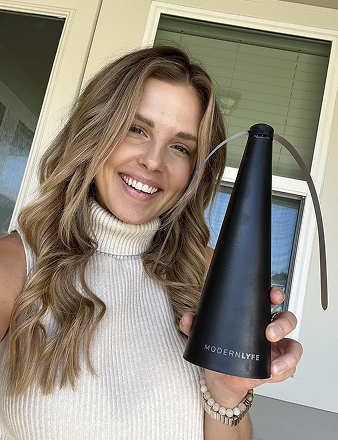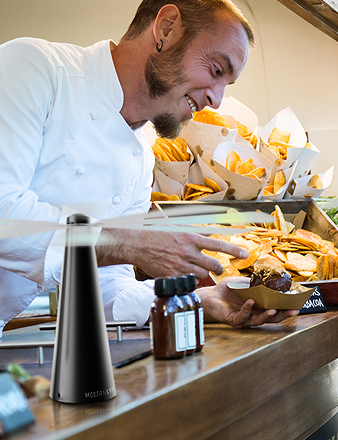Let's get straight to it. To get rid of fruit flies for good, you need a two-part plan: eliminate their breeding grounds and trap the adults. Swatting the flies you see is a temporary fix for a much bigger problem. This is a mission to break their life cycle, and winning requires hitting them on both fronts.
Your Action Plan For A Fly-Free Home
It’s incredibly frustrating when fruit flies take over your kitchen. One day you see a few, and the next, it’s a full-blown invasion. That’s because a single female can lay up to 500 eggs, which hatch into a new generation in about a week.
This is why just spraying or swatting is a losing game. The adult flies are only a symptom of a larger problem lurking in hidden, damp places. The real fight is against their eggs and larvae. Forget the quick fixes; this guide provides a systematic plan to shut down their entire operation for good.
The Core Principles Of Fruit Fly Elimination
To win this battle, you have to think in three phases. Each one is essential, and they work together to ensure these pests are gone and stay gone.
- Sanitation: This is your top priority. It's a deep, thorough clean to remove every possible breeding ground. We're talking about more than just rotting fruit—think about the gunk in your drains or the condensation pan under your fridge.
- Trapping: While you clean up their nurseries, you need to deal with the adult population. Effective traps will quickly reduce their numbers and stop them from laying more eggs.
- Prevention: Once the coast is clear, the goal is to keep it that way. This final step is about making your space permanently inhospitable to fruit flies through smart habits and simple exclusion tactics.
A common mistake is focusing only on trapping adult flies. While traps manage the visible problem, they do nothing to stop the next generation. True success comes from destroying their nurseries first.
Here's a quick breakdown of how these phases work together.
Core Strategies for Eliminating Fruit Flies
| Phase | Objective | Key Action |
|---|---|---|
| Sanitation | Eliminate breeding grounds | Deep-clean all drains, garbage disposals, and hidden moisture spots. Remove all overripe produce and organic waste. |
| Trapping | Eradicate adult flies | Set up commercial or DIY traps near problem areas to capture the existing population and prevent further egg-laying. |
| Prevention | Create a no-fly zone | Maintain a clean environment, store produce properly, and use tools like fly fans to block entry points. |
By using this comprehensive approach, you're not just getting rid of the flies you see today—you're making sure they don't come back tomorrow.
Finding and Destroying Their Breeding Grounds
To win the war against fruit flies, you have to get to the source. The adult flies are just the symptom; the real problem is tucked away in moist, fermenting organic material where they lay their eggs. This is where you must focus your efforts to break their life cycle.
Sure, check the fruit bowl first. But a serious infestation is rarely that simple. While a mushy banana can start the problem, persistent breeding grounds are often hidden. Think like a fruit fly: where is the consistent moisture and sugary gunk?
This infographic breaks down the core strategy, and it all starts with sanitation.
As you can see, cleaning up their nurseries is the foundation. Once you’ve done that, you can trap the remaining adults and put long-term prevention in place.
Your Hotspot Inspection Checklist
Start your hunt in the kitchen, but don't assume the problem stops there. Fruit flies can breed in just a thin film of fermenting sludge, which can pop up in unexpected places. Use this checklist to guide your search.
- Drains and Disposals: Your sink drain and garbage disposal are prime real estate for fruit flies. They trap tiny food scraps that build into a perfect sludge for laying eggs.
- Trash and Recycling Bins: The bottom of your trash can is probably sticky, even with a liner. Leaks and spills create a residue they love. Pay special attention to recycling bins, where a few drips from an unrinsed soda can or wine bottle become a buffet.
- Hidden Moisture Zones: Look where you normally wouldn't. Pull out the fridge and check the condensation pan. Look for slow leaks under the sink. Don’t forget about damp sponges, sour mop heads, or a wet rag wadded up in a bucket.
- Forgotten Food Storage: Go beyond the countertops. Check the back of the pantry for that bag of potatoes that's starting to sprout, or onions getting soft. A spilled juice box in a cabinet or a sticky spot on a shelf is all it takes.
Expert Tip: You're not just looking for rotting fruit. You're hunting for any place that combines organic matter with moisture. Getting rid of these hotspots isn't just cleaning—it's destroying their ability to reproduce.
How to Eradicate Them From Each Zone
Once you've zeroed in on a hotspot, a simple wipe-down isn't enough. You need a deep-cleaning strategy that eliminates adults, eggs, and larvae.
For Drains and Disposals:
Pour boiling water down the drain to loosen the gunk. Next, use a stiff drain brush to physically scrub the inside of the pipe and the underside of the disposal’s rubber splash guard. Finish with a quality microbial drain cleaner, which uses enzymes to digest the organic sludge that harsh chemicals like bleach often miss.
For Bins and Containers:
Take all trash and recycling bins outside. Scrub them with hot, soapy water, getting into the corners and seams. Finally—and most importantly—let them air dry completely in the sun before bringing them back inside. A clean, dry bin gives them nowhere to breed.
This search-and-destroy mission is the most critical part of getting rid of fruit flies. By systematically taking away every potential nursery, you're not just cleaning up; you're dismantling their entire operation.
Mastering the Art of Trapping Adult Flies
Okay, you’ve eliminated their breeding grounds. Now, what about the adult flies still buzzing around? You have to trap them, or they'll find a new spot to lay eggs, and the cycle starts over.
The good news? Trapping them is easy. Fruit flies are obsessed with the smell of fermentation, which makes apple cider vinegar (ACV) your secret weapon. To them, it smells like a delicious, overripe piece of fruit.

Building a Better DIY Trap
You don't need a fancy gadget. A simple homemade trap often works best, and you can make one in about 30 seconds.
Here’s the go-to method:
- Get a container. A small jar or glass will do.
- Add the bait. Pour in about an inch of apple cider vinegar.
- Add one drop of dish soap. This is the crucial part. The soap breaks the vinegar's surface tension, so when flies land for a drink, they'll fall in and drown.
- Make a paper funnel. Roll paper into a cone, leaving a tiny hole at the bottom just big enough for a fly to enter. Place the funnel in the jar, ensuring the tip is above the liquid. They'll fly in easily but won't be able to find their way out.
Pro tip: Placement is everything. Don't just stick the trap in the middle of the counter. Put it right next to the hotspots you cleaned—by the sink drain, near the fruit bowl, or beside the trash can. You'll catch more, faster.
Commercial Traps vs. DIY Solutions
While the DIY approach is a winner for cost and effectiveness, commercial traps have their place. They're convenient, ready to go out of the box, and can be more discreet. For a deep dive into the different options, see our guide on the best fly trap for fruit flies.
- DIY Traps: Practically free, highly effective, and easy to make anytime. You control the bait and can refresh it daily.
- Commercial Traps: A good "set it and forget it" option. Perfect if you're short on time or want something that blends in with your decor.
In my experience, a combined approach works best. Set up a few powerful DIY traps in the kitchen's main trouble spots and use commercial ones in other rooms. There are plenty of resources that show you how to catch fruit flies in your home with different household items.
By pairing deep cleaning with strategic trapping, you’ll knock out the entire population and reclaim your kitchen.
Building Your Long-Term Prevention Strategy
So, you’ve deep-cleaned their breeding grounds and trapped the last of the adult flies. Now it's time to make sure they never come back. This is where you shift from reacting to building a proactive defense. It’s all about creating simple, consistent habits that make your home a terrible place for a fruit fly.
They're on a constant mission to find food and a place to lay eggs. If you cut off their access to food, water, and shelter, you're putting up a "no vacancy" sign. They'll move on.
Fortifying Your Defenses
Your first line of defense starts at the grocery store. People unknowingly bring infestations home all the time, as fruit flies often hitchhike on produce as tiny eggs or larvae.
A little vigilance goes a long way.
- Inspect All Produce: Before you buy, give fruits and veggies a once-over. Check for bruises, mushy spots, or nicks in the skin. If it looks overly ripe or damaged, skip it.
- Wash Everything Immediately: As soon as you get home, make it a habit to wash all your produce. This simple rinse can remove any eggs clinging to the surface.
- Secure Entry Points: Check your window and door screens for small tears or gaps. A fruit fly is tiny and doesn't need a big invitation to get inside.
These small habits create a powerful filter, drastically cutting the odds of starting the problem all over again.
The biggest mistake is letting your guard down once the flies are gone. Prevention isn't a one-time job; it's a daily practice that keeps your home protected.
Creating a No-Fly Zone Through Daily Habits
Long-term success boils down to making a few fly-proofing habits part of your routine. These are minor adjustments that add up. Think of it like building a fortress, where every clean counter and sealed container is another brick in your wall.
Consistent sanitation is everything. A few drops of spilled wine or a sticky juice spot left overnight is an open invitation. Wiping up spills the second they happen is non-negotiable. For a deeper dive into repellents, you can find more tips on how to repel fruit flies.
Here are the essential habits to adopt:
- Manage Your Trash: Take out the garbage, recycling, and compost every day. One day is all it takes for a new breeding cycle to start in your bin.
- Store Food Smartly: Stop leaving fruit on the counter. Once it's ripe, put it in the refrigerator. Store things like onions and potatoes in a cool, dry, dark place.
- Maintain Your Drains: Once a week, pour boiling water down your kitchen sink. This clears out the gunk and organic buildup that makes drains a favorite breeding spot.
Specialized Tactics for Businesses and Outdoors
For homeowners, fruit flies are an annoyance. For a restaurant or bar, they’re a threat to your reputation and bottom line. A small pest problem in a commercial setting can quickly become a customer-repelling disaster that lives on in online reviews. Tackling fruit flies in these environments demands a more rigorous plan.
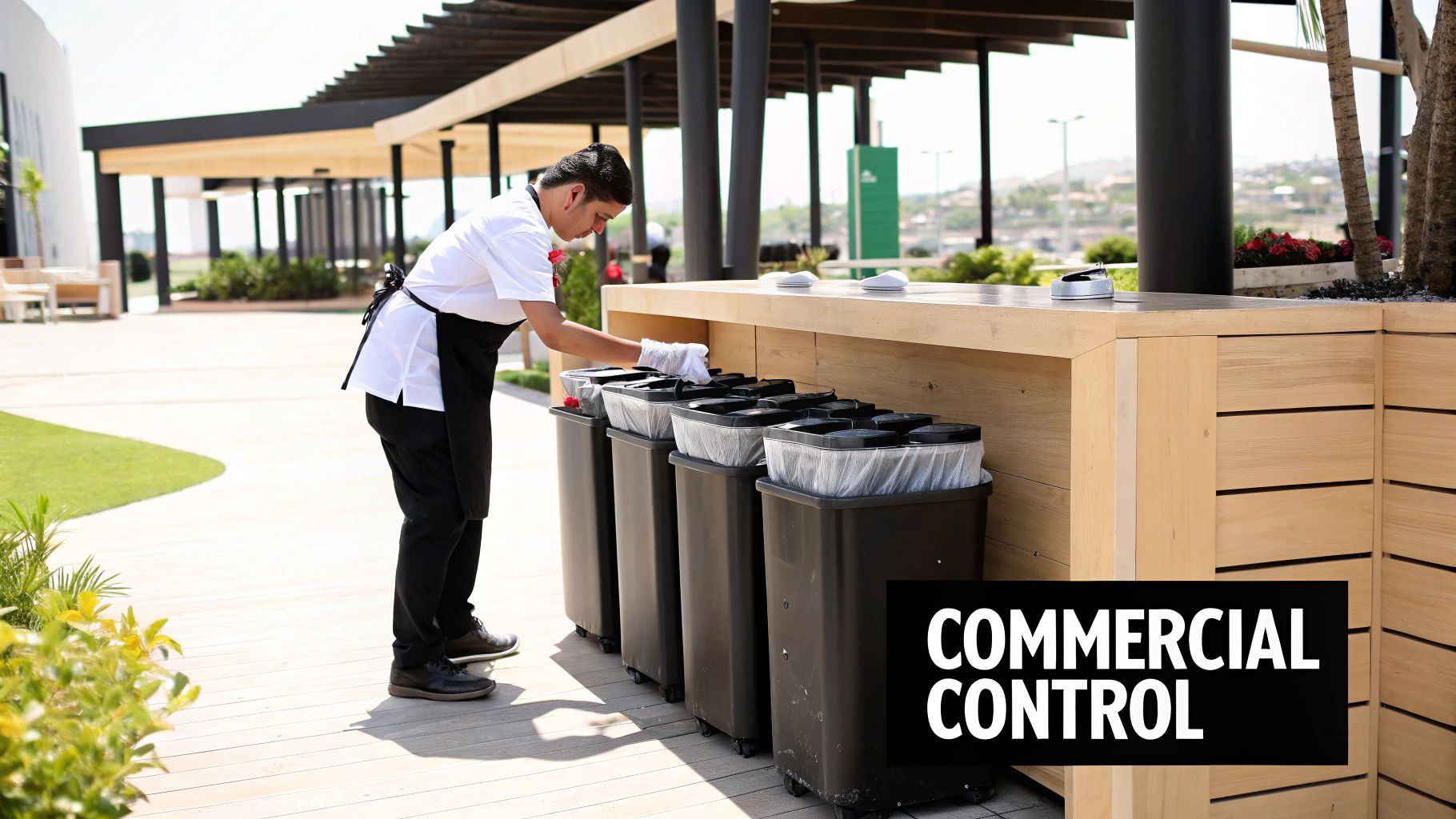
While the core principles of cleaning and trapping are the same, the scale is different. A commercial kitchen has countless potential breeding hotspots—floor drains, beer taps, soda machine lines, and the gunk in speed wells. These areas demand daily deep-cleaning that goes beyond a simple wipe-down.
Fortifying Commercial Spaces
In a business, sanitation is an airtight process. Every team member, from bartenders to prep cooks, must understand their role in fruit fly prevention. This collective effort creates a truly defensible space.
Here are a few non-negotiable routines for any high-risk commercial area:
- Bar Sanitation Protocol: At the end of every shift, clean all beer tap nozzles, soda guns, and drip trays. Scrub bar mats daily and let them dry completely. Seal every liquor bottle, especially those with sugary mixers, using pour spout caps.
- Drain Maintenance Schedule: Commercial drains are the number one breeding ground. Implement a weekly deep-cleaning routine using a stiff brush and a microbial drain cleaner designed to digest the organic sludge where flies lay eggs.
- Waste Management Discipline: All indoor trash bins must have tight-fitting lids and be emptied multiple times a day. Powerwash the bins and the main dumpster area regularly to remove sticky residues that attract pests.
The financial hit from a fruit fly infestation goes beyond unhappy customers. It can lead to health code violations, food waste, and lasting brand damage. Proactive control isn't optional—it's an essential business practice.
Creating No-Fly Zones Outdoors
When you move outdoors to patios or events, the challenge shifts from containment to exclusion. You’re in an open-air battle where new flies can arrive at any time. The key is to create a protective bubble around your food and guests.
Strategic air movement is your most powerful weapon. Fruit flies are weak fliers and can't navigate even a gentle breeze. Placing air-moving devices, like bladeless fans, around serving stations and dining tables creates an invisible barrier they can't cross. For more detailed advice, check out our guide on choosing the right commercial fly fans.
While they seem like a minor nuisance, fruit fly infestations are a huge global challenge in agriculture. In Africa alone, these pests cause over $2 billion in annual losses from crop destruction and trade disruptions, a sober reminder of how persistent these tiny insects can be.
By combining rigorous sanitation with modern exclusion tactics, any business can protect its spaces and guarantee a pleasant, hygienic experience for customers.
When It’s Time to Bring in the Pros
Most of the time, a deep clean and a few traps are all it takes to win the war against fruit flies. You put in the work, you see the results.
But sometimes, you run into an infestation so deeply entrenched that nothing you do seems to make a difference. You’ve cleaned, you’ve trapped, you’ve been diligent for over a week, and yet… they’re still there.
That’s when it’s time to call for backup. A stubborn, widespread infestation is a major red flag. It often means the breeding source is hidden somewhere you can't see or reach, like inside a wall void or deep in a drain line.
Knowing When to Escalate
A fruit fly problem can be a symptom of a bigger issue that apple cider vinegar can't fix. Recognizing when you're outmatched can save you a ton of frustration.
Here are the signs that your DIY efforts aren't enough:
- No Progress After a Week: You've been cleaning and trapping, but the fly population isn't shrinking.
- They're Everywhere: Finding flies in rooms without food, like bedrooms or bathrooms, points to a hidden, more serious source.
- The Source is a Ghost: You’ve torn your kitchen apart and still can't find where they're breeding.
For these relentless infestations, it’s worth looking into professional pest control for fruit flies. Professionals have specialized equipment and an experienced eye for spotting sources the rest of us would miss.
Pro Tip: Are you sure they're fruit flies? Pests like drain flies or phorid flies look similar but require completely different elimination tactics. An expert can make the right identification and save you from wasting time on the wrong solution.
How the Big Guns Handle It
On a much larger scale, scientists use impressive methods to protect our food supply from fruit flies.
One of the coolest is the Sterile Insect Technique (SIT). Scientists raise millions of male flies, sterilize them with radiation, and release them into the wild. These sterile males mate with wild females, but no offspring are produced. The population collapses.
This method is incredibly effective and environmentally friendly. The Dominican Republic used SIT to wipe out an invasive Mediterranean fruit fly population in record time.
Obviously, you won't be deploying SIT in your kitchen. But the principle is the same, whether you're a scientist or a homeowner: the ultimate path to victory is breaking their reproductive cycle.
At MODERN LYFE, we focus on smart, proactive prevention. Our fly fans are designed to be that final, elegant layer of defense, creating an invisible barrier that keeps flies from ever touching your food. Explore our collection of fly fans today and protect your home with style.

